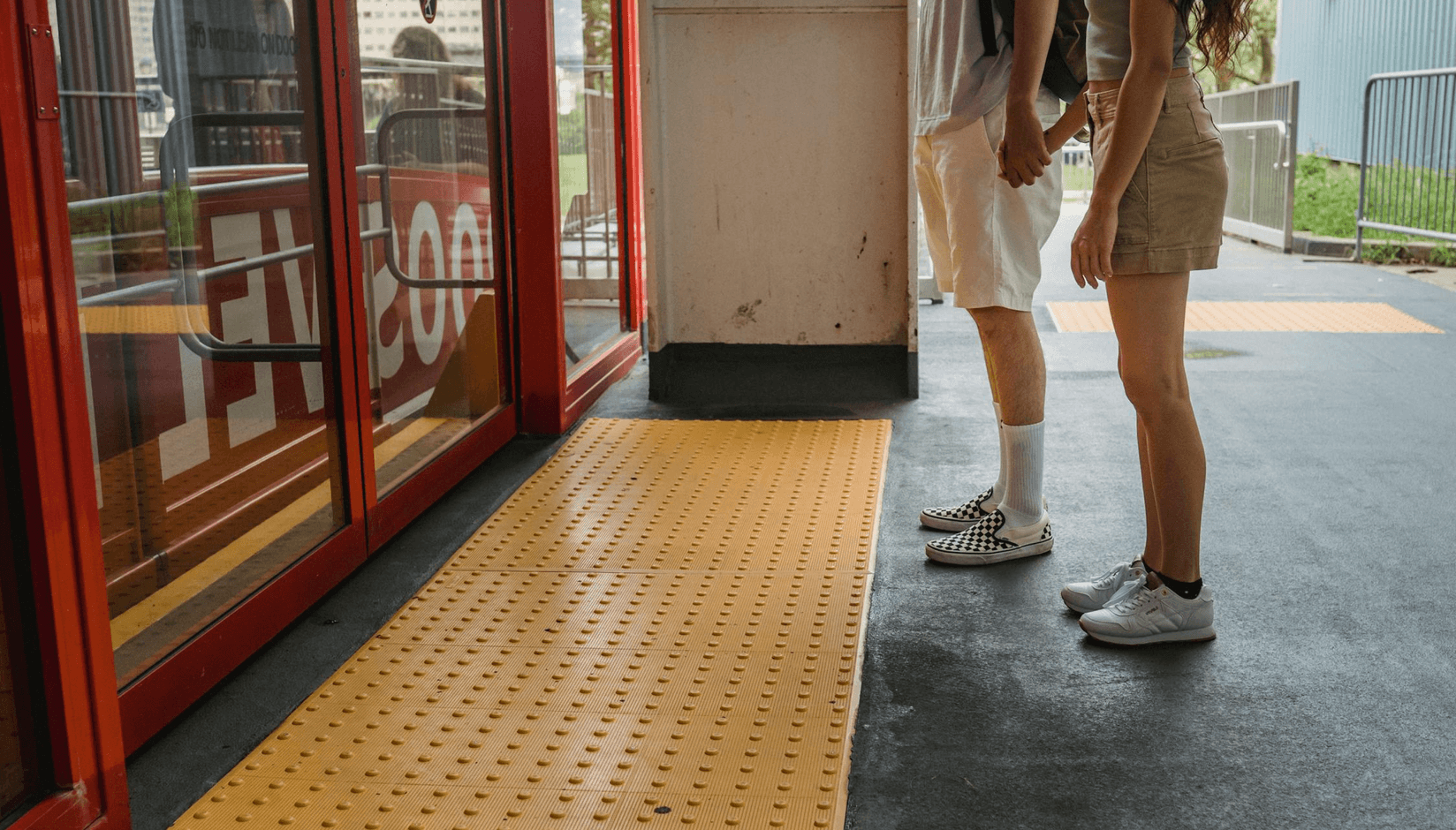As coworking spaces are continually increasing in popularity, owners often seek ways to make their space stand out among the rest. This means having a good design and layout, prioritizing functionality and comfort, and offering a host of amenities — all things that will entice people to use the space and help them be more productive. Many coworking spaces also focus on the social aspect to ensure their members are engaging with one another to promote networking and a sense of community.
However, while these are all important elements, they are not the only things a coworking space owner should know about and focus on. Accessibility, for example, is also a crucial element of creating a successful coworking space. If your coworking space is not adequately renovated from the start to adhere to accessibility guidelines, it could not only result in limiting who can access the space and become a member, but it could also result in your space getting shut down entirely.
In this article, we will take a closer look at what it means to be an accessible business, why inclusivity and accessibility are important, how to perform an accessibility audit, and additional ways to ensure your space is accessible and inclusive for everyone.
What Does It Mean to Be an Inclusive and Accessible Business?
In the most basic sense, an accessible business is one that is user-friendly. This means making sure that anyone, no matter their situation, can easily access your business. In a more detailed explanation, business accessibility means ensuring your physical space and all the services you offer are accessible to everyone—including those with socioeconomic limitations and physical and mental disabilities.
There are standards set forth by the Americans with Disabilities Act (ADA) that require all businesses to comply with accessibility regulations. If these regulations are not met, it could result in your coworking space being shut down until renovations are made. However, business accessibility is about more than just the functionality of the physical space.
Beyond adhering to ADA guidelines, a truly accessible coworking space is one that is inclusive in both its physical space and its philosophies and practices. Just because a space meets the physical requirements doesn’t mean it is a welcoming space for everyone. Thus, it is important to make more than just physical adjustments. You need to also focus on the atmosphere and the sense of community you create.
The services you offer, the events you hold, the way you communicate within the space, and the way you market your coworking space should all be inclusive of everyone, no matter their race, socioeconomic standing, or disabilities. this will ensure that your coworking space is truly a welcoming space that is open to a widely diverse group of members, which is essential for establishing and growing a successful business. Because the more people who can access and feel welcome in your space, the more you will expand your reach and convert new members.
Why Having an Accessible Coworking Space is Important

Aside from ensuring your business does not disclude people with certain limitations, having an accessible space is also important because it can help you run your business more efficiently. Again, many coworking spaces will focus on design and amenities to appeal to potential members, but when you get too caught up in creating an appealing design, it can sometimes result in issues with space efficiency.
Space efficiency is a crucial part of running a successful business, especially one that is accessible. This is because it not only ensures your space is open and accommodating of people with physical limitations, but it also focuses on good organization for general traffic flow. If your coworking space is disorganized or has too much inventory, for example, or if it simply doesn’t have a good layout that is conducive to the goal of the space, it can negatively impact your business.
Thus, it is essential to make sure your coworking space is built physically according to accessibility guidelines but also that everything within the space, such as furniture and other inventory, is well managed and organized to ensure the space runs as optimally and efficiently as possible.
There are also numerous benefits to prioritizing space efficiency beyond ensuring your business is ADA accessible, including:
- Helps you save money
- Improves workflow, productivity, and collaboration
- Better space utilization
- Reduces waste
- Promotes growth
- Improves energy efficiency
How to Make Your Coworking Space More Accessible
The first step to making your coworking space more accessible is to perform an audit to ensure certain physical aspects of your space meet ADA guidelines. Your business should allow individuals of all abilities or disabilities to access and interact with the space, including guests, members, and staff.
1. Parking Spaces
Each local area is different, but most locations have some sort of code or guidelines regarding handicap parking spaces. This could mean ensuring your parking lot has a certain number of handicapped parking spots or ensuring those with disabilities have a safe space to get dropped off or picked up in front of your place of business. You will need to consult your local building code requirements to check what is specifically required of your business for the location you are in.
2. Exterior Ramps and Steps
Businesses that have exterior slopes that are steeper than 1:20 are required to have both steps and ramps available for people with limitations. If a ramp is required to access your coworking space, it needs to have a 1:12 slope to meet ADA regulations.
3. Main Entrances
At least one entrance to your coworking space must be designed to accommodate a wheelchair. If you have more than one entrance, such as a front entrance or a side entrance, for example, only one of them needs to be wide enough to fit a wheelchair. However, if you only have one main entrance, then it must meet ADA guidelines, which is a door width of at least 32 inches.
4. Hallways and Doors
Interior doorways must also be at least 32 inches wide to accommodate wheelchairs, and they must also be easy to open. If the door design is not easy to open for someone in a wheelchair, then there needs to be a handicap button that automatically opens the door for them. Hallways and corridors as well must be wide enough to fit a wheelchair comfortably through and must not contain anything that will obstruct the movement of a wheelchair, such as decor or rugs that are difficult to get by or pass over.
5. Interior Steps and Lifts
To create an accessible space, it is best to minimize the use of steps as much as possible. If steps are required to access another floor, however, there must also be a ramp provided or an accessible lift or elevator. Remember, the entrance to the lift or elevator must also be wide enough to accommodate a wheelchair. Once these things are installed, they must be properly maintained to ensure they are always available to people who may need them.
6. Desks and Tables
An aspect that is often missed but is just as important as everything else is the height of desks and tables. This is especially important for coworking spaces. You want to ensure that there are plenty of desks or tables available that can accommodate a wheelchair. As per ADA guidelines, this means they need to be at least 27 inches high or be adjustable to at least reach that height.
7. Signage
All wayfinding signs in the building must be legible by people with varying abilities. These can include bathroom signs, office space or conference room signs, stairwell signs, and directories. To meet ADA requirements, the signs must use Braille or raised lettering, legible text and numbers, and appropriate symbols. They must also be placed at a height where people with disabilities can easily see and reach them.
8. Screens and Digital Displays
If screens or digital displays are used in place of static signs, they must also be accessible. If there is no Braille or raised lettering, for example, there should be an audio option that tells the person what the screen displays. Screens and digital displays must also be placed between 27 to 80 inches high for visibility and accessibility and may not protrude more than 4 inches from the wall so as not to obstruct a pathway. If it is a touchscreen, it cannot be placed higher than 48 inches.
9. Toilets
Toilets, whether for public or member use only, must also meet ADA standards. Stalls need to be wide enough to accommodate assistance devices and have doors with locks that are easy to use. You should also use grab bars to make it easier for guests with disabilities to maneuver themselves on and off the toilet, and toilets should not be so high as to make it difficult for people in wheelchairs to sit on them.
Additional Ways to Ensure Your Coworking Space is Inclusive and Accessible
Aside from the physical ADA requirements for a space, there are numerous other ways to make your coworking space more inclusive. Disabilities go beyond physical limitations. People can also struggle with access due to mental or neurological disabilities, socioeconomic limitations, and even general health limitations.
The tips below can help you address a wide variety of limitations to ensure your coworking space overall is a highly inclusive environment:
- Avoid lights and sounds that could be triggering to people with epilepsy or other neurological disorders.
- Use colors, textures, and designs that help soothe people who are neurodivergent or those who have ADHD or depression.
- Ensure general communication, use of language, and policies are inclusive and mindful of all individuals, no matter their race, socioeconomic status, or disability.
- Design a website and use marketing that is accessible and inclusive. You can check whether your current site is accessible using this website accessibility checker.
- Utilize ergonomic furniture that is comfortable and easy for all to use.
- Install a security system to ensure all guests, members, and staff feel safe and protected in the environment.
- Consider eco-friendly upgrades to save you money and promote a healthier environment for people with health concerns.
Final Thoughts
When designing an accessible and inclusive workspace, the practices and overall atmosphere are just as important as the structural components. Follow the tips and ADA guidelines above, but also seek ways to go above and beyond to show your staff and members that yours is an ethical, welcoming, and inclusive space. You can do this by emphasizing intersectionality, organizing diversity days, promoting equality and community, listening to complaints and feedback, and making adjustments as needed.





